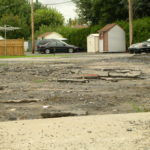 To conclude our current discussion of “If you can’t measure it, you can’t manage it” to its end point, let’s consider the consequences of taking this too literally- “I measure, therefore I manage”
To conclude our current discussion of “If you can’t measure it, you can’t manage it” to its end point, let’s consider the consequences of taking this too literally- “I measure, therefore I manage”
There is an industry now for collecting data, massaging it, producing charts or spreadsheets – for others to use. So how much time is spent finding out whether the data is actually used and appreciated? Is there a process for following through the decisions made on the basis of that information to see how the data could be improved?
What can we do to improve our management?
Deming was, of course, a great believer in the value of metrics and statistical analysis, but even he realised that there was more to management than metrics and stated that one of the seven deadly diseases of management is running a company on visible figures alone.
A great example of the dangers of so doing can be drawn from the electricity company that decided to withdraw from service its most recent (and thus most efficient) coal fired plant only two thirds into its life and to build a new power plant using a new and untested coal source – because their model told them to! Questioning revealed that neither the modeller nor anyone else knew what was causing the model to generate its results.
Many a works system is designed to determine when works should be carried out. Inevitably this is based on the designer’s best knowledge and judgement at the time. But what if circumstances change? What alerts us to the fact that there IS a change? Do we know enough to make adjustments? Are we critically analysing the output of the system or do we take the system outputs for granted?
Question: Do you have examples of where measurement has led us astray?
 In our May 20 Blog Post we challenged the uncritical acceptance of the notion that “If you can’t measure, you can’t manage” But measures can be deceptive, when they are chosen without understanding as we saw in the May 24 Blog Post. With Government and Senior Management focussed on the notion of managing by measurement, more measurements are being demanded all the time – in all areas, not just infrastructure. In order to survive, operatives seek to comply by measuring what is easiest, rather than, measuring what is important.
In our May 20 Blog Post we challenged the uncritical acceptance of the notion that “If you can’t measure, you can’t manage” But measures can be deceptive, when they are chosen without understanding as we saw in the May 24 Blog Post. With Government and Senior Management focussed on the notion of managing by measurement, more measurements are being demanded all the time – in all areas, not just infrastructure. In order to survive, operatives seek to comply by measuring what is easiest, rather than, measuring what is important.
Some things are easier to measure than others – quantity, for example, is easier to measure than quality. Inputs are easier to measure than outputs. Outputs are easier to measure than outcomes. Products are easier to measure than services.
The aim of all management is to secure desirable outcomes but it is easy to get diverted into measuring what it is easy to measure rather than what it is important to measure,
For example, many councils have hours of videos of storm water infrastructure – unanalysed! Lots of measures – but no management- worthy information.
The condition of road seal is easier to measure than the condition of the underlying road pavement, the first is visible whereas the latter is not. Some years ago a state transport authority adopted a policy that they called ‘a stitch in time’, quite a catchy title for maintenance. Under this policy they required agencies to reseal every ten years and to reconstruct the road pavement every 100 years. Easy to measure!
But it resulted in reseals being carried out over decidedly unsound road pavements because the time for road pavements was not up. It will not come as a surprise that the reseals did not last, much money was wasted and the overall condition of roads deteriorated until the policy was changed.
Question: Is there an answer to this problem? What is your experience?
 It is important not to confuse the notion of management with metrics.
It is important not to confuse the notion of management with metrics.
Metrics are important – when they add to our understanding.
However, frequently they substitute for understanding.
Creating our own RELEVANT metrics is time consuming, so there is a natural human tendency to seek short-cuts. For example when benchmarking first came to our attention it was through a thorough examination of the company’s own processes and comparison with those of its chosen exemplar. It took a lot of time, but was very successful. Others wanted the success but were not prepared to put in the time and effort understanding either their own processes or those of the intended benchmark. So they skipped the understanding and analysis stage and went straight to collecting metrics. A lot of time was wasted and bad judgement calls made in the 1990s and 2000s because of this. Using figures from other times, places and cultures without understanding is as foolish as it sounds, but is still being done.
The ‘life’ of assets is an important factor in many decisions, from costing, to planning, to intervention. But few ‘lives’ are calculated based on the type of asset involved and conditions of its use. Some years ago, a Transport Company assumed that the life of its buses was 12 years. No-one actually knew where the figure came from but they swore by it. When challenged, it turned out that the figure had come from a statement – made some 15 years earlier – by the Chief Engineer at the time who had said: “We don’t know how long a bus should last but it certainly shouldn’t be more than 12 years.” This was a statement based on his best professional judgement at the time. But 15 years had passed. When a proper analysis was conducted the figure turned out to be 16+ years. So the outcome of accepting, uncritically, the earlier metric, had caused early disposal and a 25% loss in bus value.
Question: What has been your experience with metrics?
 With the world changing as fast as it is today, I suggest we need to look again at a number of notions that may have served us well in the past but may now be outdated or corrupted. In any case, they warrant a critical ‘second look’. And where better to start than with the well know prescription
With the world changing as fast as it is today, I suggest we need to look again at a number of notions that may have served us well in the past but may now be outdated or corrupted. In any case, they warrant a critical ‘second look’. And where better to start than with the well know prescription
“If you can’t measure it, you can’t manage it”
Where did this come from?
It is usually ascribed to Edward Deming (or, sometimes, Peter Drucker). Deming was an American statistician who rose to fame by helping Japanese manufacturing industry improve the quality and reliability of its product through concentrating on measures that enabled them to reduce variability.
But Deming didn’t actually subscribe to this at all!
Deming is often misquoted as saying, “You can’t manage what you can’t measure” but Deming realised that many important things that must be managed can’t be measured. He asked “Spend $20,000 training 10 people in a special skill. What’s the benefit?”, and answered “You’ll never know! You’ll never be able to measure it. Why did you do it? Because you believed it would pay off!”
In “Out of the Crisis” (p.121), Deming cites Lloyd S. Nelson, director of statistical methods for the Nashua corporation, “The most important figures that one needs for management are unknown or unknowable, but successful management must nevertheless take account of them.”
So what are the downsides of adhering to this prescription?
Gut feel, intuition, imagination all play a role in management, but today we tend to denigrate these elements and consider them less important than metrics. (As an aside, every business man is urged to do consumer surveys to measure the likely demand for new products and to then base his decision on the metrics. As is now well recognised, if Steve Jobs had thought that way we would not now have the iPhone, the iPad, and the iPod; products that, at the time, were beyond customers’ perceptions.)
There is more to management than simply measurement.
Question: What are the Upsides, and what the Downsides of uncritical acceptance of this management prescription?
 Another way to look at critical infrastructure.
Another way to look at critical infrastructure.
Linda Newton, at Carlton Univeristy in Canada teaches part of a program called ‘Infrastructure Protection & International Security’. It’s unique in that it combines students with a policy/international studies background with students with an engineering/architecture background. Each group takes courses from the other area along with several core courses.. Linda’s focus is on the definition used by both ISO 55000 and the European Commission but starts by positioning Critical Infrastructure from a historical perspective.
How did it evolve?
Is what was critical in the past still critical today and will it remain critical? This really gets students thinking about Critical Infrastructure. She uses photographs to illustrate the evolution of Critical infrastructure in the first lecture of the course & then asks ‘what’s the link between the following: e.g. Tower of London, London Docklands (now parks), Berlin Wall, Minuteman missile silos, etc.?’ (Answer: They were all critical at one point in history.)
The focus is on what makes an asset critical
This is both from the definition and then within its category, not on the vulnerability of assets from a security perspective but from an AM perspective. The role of an Asset Manager is to ensure infrastructure is managed as best as possible so that those who make emergency preparedness/business continuity planning decisions, whether the Critical Infrastructure is public or private, do so knowing the state of their respective critical assets. It’s the job of the AM to ensure there is redundancy and resiliency in critical assets, and advise accordingly, not because of an ‘evil intent’ but because it’s sound AM. It’s about information and making sure we have what we need at all phases to make informed decisions.
How do you look at – and deal with – critical infrastructure?
 When the Australian Government created a new body to scrutinise infrastructure asset sales for security risk, it occurred to me that we have made infrastructure vulnerable by making it large and interconnected. This is true of both physical and financial infrastructure (e.g. the banking system).
When the Australian Government created a new body to scrutinise infrastructure asset sales for security risk, it occurred to me that we have made infrastructure vulnerable by making it large and interconnected. This is true of both physical and financial infrastructure (e.g. the banking system).
In the past this was a means to greater efficiency and we were prepared to take the risks involved. Today, with technological developments, however, we can decrease the criticality of critical infrastructure by disaggregating, decentralising, and changing the ownership structure. This is particularly so for banking. But take electricity as an example. A series of interconnected, community-owned, local solar grids would be less susceptible to power failures as well as to actors of ‘evil intent’.
The blockage is the change in ownership structure. Not unnaturally, incumbents stand to lose. Large companies and governments in electricity supply are vulnerable to both criticality and financial risks. They have been putting a lot of thought into the changes that can be made so that we should not assume that they will resist change – although it is probably in their interest to slow it down. We all fight to preserve our own, it’s only natural.
So, if we want to see change in the community interest, it is in that interest to find ways to help current owners make the transition – profitably and with minimal delay.
What is being done, or could be done? What could we support? Ideas?

Recent Comments